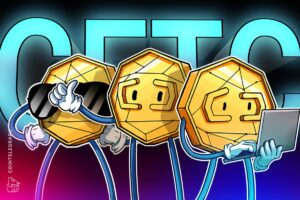Polygon (MATIC) rally ends when competitors eat market share

Polygon's native token (MATIC) has experienced a 16.4% rally since launching the Polygon 2.0 Gorely Testnet on October 4. But the resistance at $0.60 remained stronger than expected, with a six-day decline of 10.6%. October 10
This decline was exacerbated by negative news regarding the departure of a key co-founder and weak activity in the Polygon Zero Knowledge Rollup (ZK-rollup) subnet.
MATIC price erased the gains made before the early October rally, canceling the bullish impulse expected from the protocol updates.
Demonstrations tend to follow mainnet and protocol updates.
Polygon 2.0 is a network of ZK-based layer-2 chains integrated with a new cross-chain coordination protocol. Polygon 2.0's scaling technology is planned for June 2023 as a four-tiered scaling ecosystem: layering, execution, interoperability, and authentication. Each of these layers contributes to the creation of interconnected ecosystems of chains that facilitate secure, fast and cost-effective transfers.
Among the benefits of Polygon 2.0 are improved security and privacy with ZK-proofs, full compatibility with the Ethereum Virtual Machine (EVM) and fast chain connections without the need for additional security or trust assumptions. It is worth noting that the project is developing a transparent argument of knowledge-based layer-2 solution that can scale to zero knowledge.
One could argue that the recent 10.6% retracement merely reflects an adjustment to the overexcitement caused by TestNet's launch. However, other factors contributed to investors' worsening sentiment toward Polygon. For example, Polygon's ZK subnet, zkEVM, lags behind competitors in terms of activity and deposits.
Network data shows that Polygon is losing steam as new competition emerges.

Measurements from on-chain data provider Artemis show a significant difference with Polygon zkEVM's 6,210 active addresses compared to Starknet's 154,390 and zkSync ERA's 239,810. A similar difference exists when analyzing the number of daily transactions, Polygon's ZK-rollup also trails competitors.
Taking a broader view of the overall volume of transactions and deposits in the Polygon network will yield good results. For example, Polygon's total value locked (TVL) stands at $756 million, according to Defillama, which is less than half of Arbitrum's layer-2 scale solution.

It's interesting to note that despite launching in June 2020, much earlier than most Ethereum layer-2 solutions, Polygon is now facing direct competition from Optimism and Base.
Polygon co-founder Jainty Kanani's October 4 exit from the project after six years has caused some discomfort among investors, given the project's proximity to a milestone in the creation of an improved multi-layer solution. Interestingly, this decision follows the departure of Polygon Lab CEO Ryan White in July 2023, shortly after joining the company in February 2022.
An additional MATIC performance impact is the reduction in the number of active addresses using Polygon Network decentralized applications (DApps).

On average, the top 12 DApps on the Polygon network experienced a 17% drop in active addresses over the past 30 days. This issue was of particular concern to NFT and decentralized financial markets, particularly affecting applications such as Uniswap, OpenSea and Move Stake.
Related: Circle Issuing Native USDC Tokens on Polygon
Regardless of the reasons behind the MATIC token's rise in early October, the recent negative performance of 10.6% can be attributed to reduced network activity, the departure of a co-founder during a critical upgrade phase, and strong competition from other ZK scaling solutions.
Ultimately, there is enough bearish news flow to justify this correction, although the team is constantly delivering important updates and improvements to the Polygon network. Investors should closely monitor the progress of the project to address these challenges and leverage Polygon 2.0 innovations.
This article is not intended for general information purposes and should not be construed as legal or investment advice. The views, ideas and opinions expressed herein are solely those of the author and do not necessarily represent the views and opinions of Cointelegraph.














